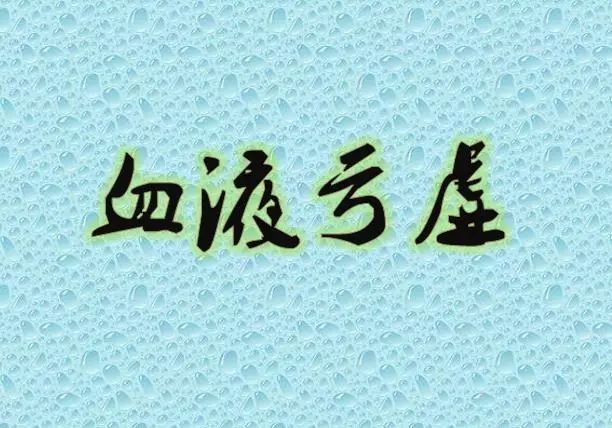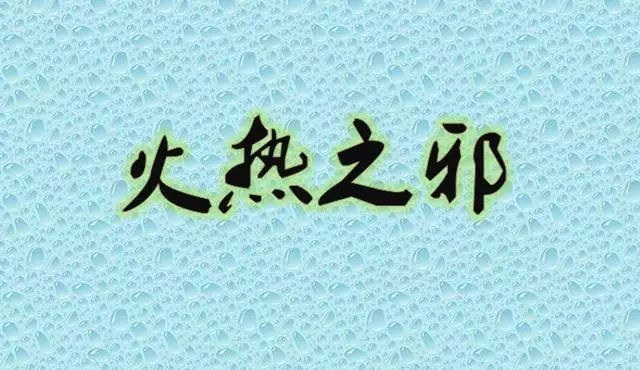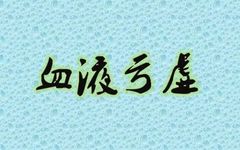Blood Deficiency Syndrome
Blood Deficiency Syndrome refers to the deficiency of blood leading to inadequate nourishment of the organs and meridians, resulting in a general state of weakness.There are many causes of Blood Deficiency Syndrome, including congenital insufficiency, postnatal malnourishment, spleen and stomach weakness, and insufficient production of blood; acute bleeding; chronic illness leading to qi deficiency and blood loss; excessive worry and overthinking, which depletes yin blood; blood stasis obstructing the channels, preventing the generation of new blood; or intestinal parasites, among others.Main clinical manifestations include:pale or sallow complexion, pale lips, pale nails, dizziness, palpitations, insomnia, numbness in hands and feet, women experiencing scanty and pale menstrual flow, delayed menstruation or amenorrhea, pale tongue with white coating, and thin, weak pulse.

Pathophysiological Analysis:This syndrome is characterized by the loss of color in the face, lips, and nails, along with overall weakness.All organs and tissues in the body rely on blood for nourishment; when blood is abundant, the skin appears rosy and the body is strong, while blood deficiency leads to a lack of nourishment, resulting in pale skin, lips, nails, and tongue.When blood is deficient, the brain and eyes are not nourished, leading to dizziness; when the heart is not nourished by blood, palpitations occur; when the spirit is not nourished, insomnia results; when the meridians and muscles lack nourishment, numbness in the hands and feet occurs; and when the vessels are not filled, the pulse is thin and weak.For women, blood is essential; insufficient blood leads to scanty menstrual flow, pale color, and delayed menstruation or amenorrhea.
Blood Stasis Syndrome
Blood that cannot be timely expelled or dissipated from the meridians and accumulates in the body, or blood that flows sluggishly and accumulates in the meridians or organ tissues, is referred to as blood stasis.The syndrome caused by blood stasis is called Blood Stasis Syndrome.Causes of blood stasis include cold obstruction, qi stagnation, qi deficiency, and trauma.Main clinical manifestations include:sharp, stabbing pain that feels like being pricked or cut, pain that is localized and resists pressure, often worsening at night.Visible masses on the surface of the body appear bluish-purple;if in the abdomen, they are hard and immovable, also known as scar accumulation.Recurrent bleeding, with dark purple color, or black tarry stools.Dark complexion, rough skin, bluish-purple lips and nails, or subcutaneous purpura, or fine blood vessels appearing like threads on the skin, or visible blue veins in the abdomen, or swollen and painful blue veins in the lower limbs.Women often experience amenorrhea.Purple or dark tongue, or visible stasis spots, with a thin and rough pulse; in summary, pain, purple color, stasis, masses, and roughness are characteristic.

Pathophysiological Analysis:Blood Stasis Syndrome is characterized by fixed, stabbing pain, resistance to pressure, masses, bleeding, and bluish-purple lips, tongue, and nails, with a rough pulse.Stagnation of blood leads to obstruction of the vessels, causing qi stagnation; when there is no flow, there is pain, hence the severe pain that feels like being pricked or cut, with fixed location; pressure exacerbates qi stagnation, increasing pain, hence the resistance to pressure; at night, the yin energy is strong, and blood stagnation causes increased pain; blood stasis accumulates locally, and if it does not disperse over time, it forms a mass, which appears bluish-purple in the skin tissue;if the mass is in the abdominal cavity, it can be felt as a hard, immovable lump that is painful to touch, known as scar accumulation.Blood stasis obstructs the vessels, causing qi and blood flow to be hindered, leading to bleeding.Due to the accumulation of blood stasis in the body, it blocks the vessels, which can lead to recurrent bleeding, hence the characteristic of bleeding that comes and goes.Blood stasis leads to poor nourishment of the skin, resulting in a dark complexion and rough skin like scales, even bluish-purple lips and nails.Different locations of blood stasis present differently; for example, if it obstructs the skin, purpura appears; if it obstructs the muscle meridians, fine threads appear on the skin; if it obstructs the liver meridian, visible blue veins appear in the abdomen; if it obstructs the lower limbs, the calves may show prominent, twisted blue veins, or even curl into a mass; blood stasis prevents the generation of new blood, leading to amenorrhea in women.Purple or dark tongue and thin, rough pulse are common signs of blood stasis.Blood Heat SyndromeBlood Heat Syndrome refers to the excessive heat in the organs that forces heat into the blood, resulting in various symptoms.It is often caused by external heat pathogens, excessive alcohol consumption, overindulgence in spicy foods, anger damaging the liver, or excessive sexual activity.Main clinical manifestations include:hemoptysis, hematemesis, hematuria, and epistaxis, accompanied by irritability, dry mouth with little desire to drink, fever that worsens at night, red tongue, and rapid pulse.Women may experience early menstruation with heavy flow.In summary, the key diagnostic points are bleeding and accompanying heat signs.

Pathophysiological Analysis:Excessive heat in the organs forces heat into the blood, causing blood to boil and leading to various bleeding disorders.Depending on which organ is affected, the bleeding site varies.If the lung meridian is affected, hemoptysis occurs;if the stomach meridian is affected, hematemesis occurs;if the bladder meridian is affected, hematuria occurs.Excessive heat disturbs the heart and spirit, leading to irritability;yin blood is consumed, causing dry mouth, and heat not being in the qi level leads to dry mouth with little desire to drink;heat entering the blood level, which is yin, causes fever that worsens at night;excessive heat causes early menstruation with heavy flow.Red tongue and rapid pulse are signs of blood heat.
Blood Cold Syndrome
Blood Cold Syndrome refers to the invasion of cold pathogens into the blood vessels, obstructing qi flow, leading to poor blood circulation.It is often caused by exposure to cold pathogens or a deficiency of yang energy in the body.Main clinical manifestations include:pain in the hands and feet or lower abdomen, preference for warmth and aversion to cold, with pain alleviated by warmth.Cold hands and feet with bluish-purple color, women may experience delayed menstruation with dark purple blood containing clots.White coating on the tongue, and a deep, slow, and rough pulse.

Pathophysiological Analysis:Blood Cold Syndrome is characterized by localized pain that prefers warmth and bluish-purple skin color.Cold is a yin pathogen that causes stagnation; when cold invades the blood vessels, it causes qi stagnation and poor blood circulation, leading to cold pain in the hands, feet, and lower abdomen, with bluish-purple skin.Blood flows better when warm and stagnates when cold, hence the preference for warmth and aversion to cold, with pain alleviated by warmth.Cold in the blood vessels leads to cold pain in the lower abdomen, delayed menstruation, or dark purple blood with clots.Cold obstructs the blood vessels, preventing qi and blood from nourishing the tongue, leading to a purple tongue with white coating.A deep, slow, and rough pulse is indicative of cold obstructing blood stasis.You may also like:Both fear of cold and heat indicate spleen deficiency; always feeling tired indicates spleen deficiency; spleen and stomach cold deficiency can lead to excessive salivation.A healthy body can be “rubbed” into shape:In leisure time, stimulate five longevity points for better health.The kidneys are the foundation of congenital essence, which is the capital of life; maintain the acupoints for health.

